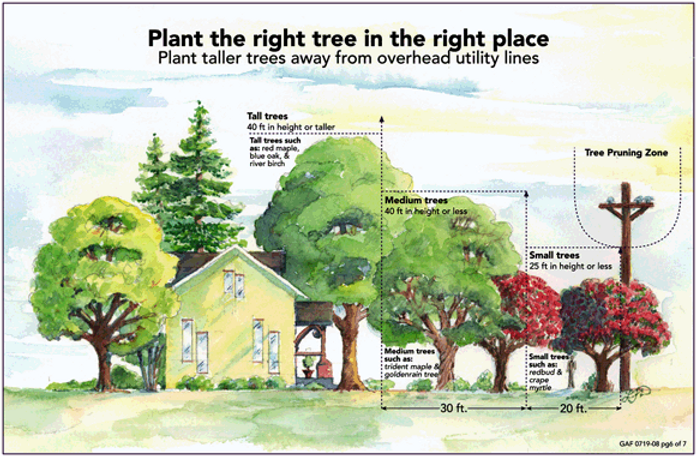As winter thaws into spring, many homeowners are poised to take advantage of prime tree-planting season. Establishing new trees early can aid their growth throughout the year, and help them survive when hot weather arrives. But with so many tree species to choose from, how can homeowners know which trees are best suited for their landscapes?
“Selection of trees for planting in a home landscape depends on several factors, including a suitable growing site and any function they are going to serve,” explains Tchukki Andersen, BCMA, CTSP* and staff arborist with the Tree Care Industry Association (TCIA). “Will they attract birds to the area? Shade a patio? Screen an unsightly view? Enhance the appearance of the home? Trees can provide contrast and relief from surrounding buildings and create seasonal interest in areas near the home,” says Andersen.
We advise homeowners to consider the following factors when selecting a tree:
- hardiness (ability of the plant to survive extremes of winter cold and summer heat, and sudden temperature swings)
- mature height and spread
- growth rate above and below ground
- available space above and below ground
- aesthetics
- moisture requirements for the life of the tree
- maintenance requirements for the life of the tree
- availability at local nurseries
- ornamental effects, such as branching habit, texture and color of bark, flowers, fruit and foliage
ArborTech Tree Care can help you determine which tree species perform well in your local area and are suited to your desired planting site. Arborists typically analyze the specific planting site to determine the compatibility of the tree to the site. Environmental considerations may include:
- disease and insect problems that may limit your selections
- the prior use of the planting site
- soil conditions, such as poor drainage, high or low pH, and soil nutrition
- the presence or absence of channelized winds
- the location of utilities, both above and below ground
- the proximity of the plant to roads, walkways and security lighting
Is there enough space to plant a tree?
The space available at the specific site and mature tree size are important considerations, and addressing these limits will go a long way toward reducing maintenance costs. Utilities, in particular, should be given a wide berth. If your tree will grow to 25 feet or taller, do not plant it under or near overhead power lines. Do not forget the underground utilities; they may need to be serviced at some point, and the tree should never impede this. Call 811 for the national “Call Before You Dig” hotline to make sure your chosen planting site will not hinder utility maintenance. Keep in mind the ground-level utility structures such as transformers and individual service connections, which also require space to be serviced.
Where to plant
Community ordinances may restrict planting of trees near power lines, parking strips, streetlights, sewers, traffic control signs and signals, sidewalks and property lines. Municipalities may require planting permits for trees planted on city property. City codes often require that trees on city property be maintained by the city, so citizens planting an improper selection can cause problems for themselves and the municipality. You can find your cities’ approved tree list on their official City website. For example, you can find Fremont, California approved tree list here. On the other hand, some cities simply discourage the planting of certain species. For example the town of Atherton, California has a list of disfavored trees in their tree ordinance.

Find a professional
ArborTech can assess your landscape and work with you to determine the best trees and shrubs to plant for your existing landscape, and how best to protect them. Homeowners who would like a professional arborist to assess their trees or want to plant a tree, call (510)881-8733 to schedule your FREE ESTIMATE appointment.





